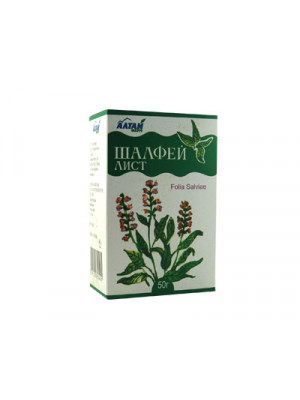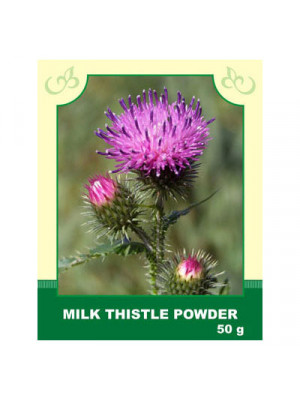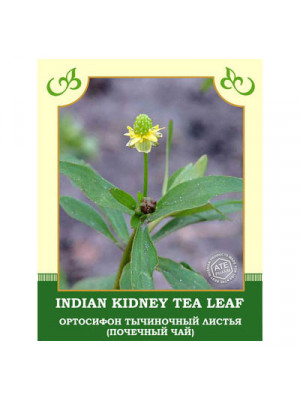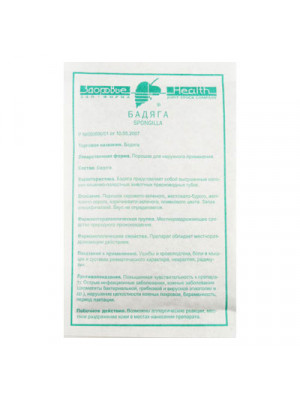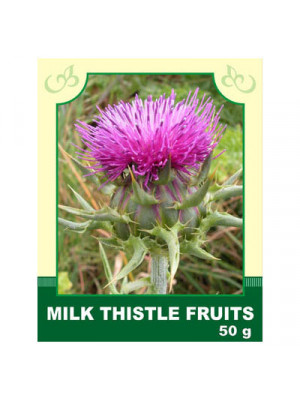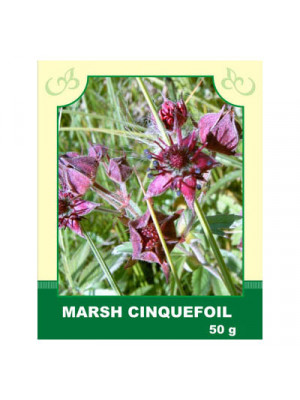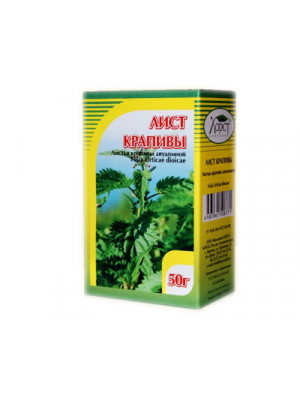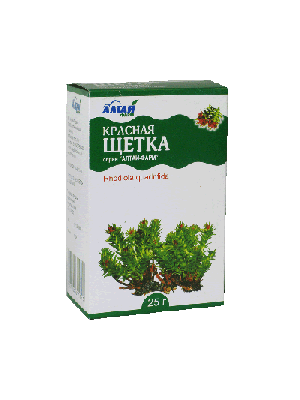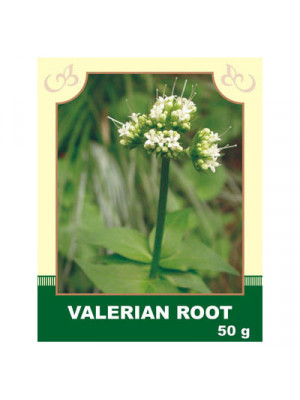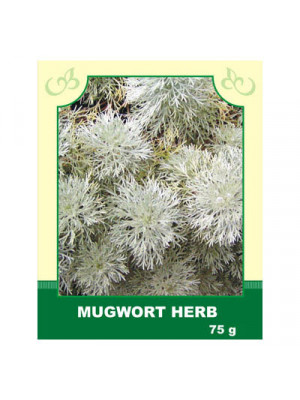Herbs
Internal use: Taken for gastrointestinal spasms, inflammation of the gastric mucosa with reduced acidity of gastric juice, peptic ulcer of the stomach and duodenum, inflammation of the gallbladder and urinary bladder, as an expectorant for upper respiratory tract inflammation, to reduce milk formation in nursing mothers, for infertility, and to improve memory. Considered very effective during the menopausal period.
Application and dosage: Pour 1 tablespoon of raw material with 400 ml of boiling water and infuse for 20-30 minutes. Take 1/4 cup 3-4 times a day.
External use: Used for inhalations, rinses, and compresses to treat stomatitis, upper respiratory tract catarrhs, toothache, inflammatory skin conditions, purulent wounds, and for mild burns and frostbite. Use 2-3 tablespoons of finely chopped dry leaves per 500 ml of boiling water.
Contraindications: Individual intolerance, acute nephritis, pregnancy.
$6.99In folk belief, 1 tablespoon of meal is thought to completely neutralize alcohol before a feast. The leaves of milk thistle are considered a mild laxative and diaphoretic.
The seeds are used for hepatitis, gallstone disease, colitis, hemorrhoids, diseases of the spleen, thyroid gland, as well as for salt deposits, edema, dropsy, obesity, radiculitis, and joint pain in allergic skin diseases, baldness, and psoriasis. The meal is effective in alcoholism, constipation, reduces blood sugar levels, purifies the blood, and treats varicose veins.
Method of application and dosage: Steep 1 teaspoon of seeds in 250 ml boiling water, infuse for 20 minutes, strain, and drink hot in small sips, one glass in the morning on an empty stomach, half an hour before lunch, and in the evening before bedtime.
For the meal, boil 30 g in 0.5 L of water on very low heat until half of the liquid evaporates. Strain, drink 1 tablespoon every hour from morning to evening, or take 1 tablespoon of powder 4-5 times a day 20 minutes before meals, washed down with water. The course of treatment is one month. If necessary, repeat the course after 2-3 weeks. Halve the doses for children.
Contraindications: Individual intolerance.
$5.99Internal use:
Consuming an infusion made from the herb of this plant is effective for cholelithiasis, edema of various origins, cystitis, kidney stones, rheumatism, gout, and diabetes. Better results are achieved when combined with other medicinal plants that have diuretic and anti-inflammatory properties (field horsetail, weeping birch, cranberry leaves, and knotweed).
Application and dosage: Pour 1/2 teaspoon of crushed herb with 200 ml of boiling water, heat in a water bath for 10 minutes, infuse for 45 minutes at room temperature, strain, bring the infusion to the original volume with boiling water, and drink warm 1/2 cup twice a day before meals for 4-6 months with monthly breaks of 5-6 days. In case of cholecystitis, take the infusion after meals.
Contraindications: Individual intolerance.
$7.99Externally, the powder of marl has resorptive and whitening effects. For adolescent acne, marl powder is mixed to the consistency of sour cream with 3% hydrogen peroxide or a 5% solution of boric acid. It is heated in a water bath and rubbed into the facial skin, wearing rubber gloves. After 30 minutes, the mask is washed off.
In places of bruises, pigmentation on the face, bruises, and hematomas, a mixture of 1 part marl powder and 30 parts vegetable oil, preferably olive oil, is rubbed. This is also a good distracting remedy for muscle pain.
For oily seborrhea, slowly add 3% hydrogen peroxide or a solution of boric acid (0.5 teaspoon per 0.5 cup of water) to 1 teaspoon of marl powder, stirring. The mixture, with the consistency of sour cream, is heated in a water bath and warm rubbed into the hair roots once every 5 days.
Contraindications: Individual intolerance. Do not apply around the eyes, do not use on dry and thin facial skin, in the presence of superficial vessels, and with increased hair growth on the face.
$6.99
Description. Milk thistle is also known as St. Mary's thistle and lady's thistle. As the legend says it was St. Mary who gifted Milk Thistle to people. Milk Thistle is powerful in reconstruction of liver cells, it also is an antioxidant, and stimulates milk formation. Milk thistle fruits contain a mixture of flavonolignans. The fruits also contain fixed oil (a combination of fatty acids that are solid at room temperature), mucilage, protein and taxifolin (a chemical with unknown significance). Milk Thistle has been used as a therapy for many illnesses since ancient times. Use. Milk Thistle Herb is used for functional disorders of the liver and gallbladder. It is considered especially helpful in cases jaundice, colitis, pleurisy, and diseases of the spleen. Milk Thistle Fruit are used by some for the treatment of dyspeptic symptoms, loss of appetite, liver and gall bladder complaints including inflammation of the gall bladder duct, toxic liver disease and hepatic cirrhosis. It helps reduce outbreaks of Psoriasis. The National Cancer Institute and the National Institute of Nursing Research are also studying milk thistle, for cancer prevention and to treat complications in HIV patients.
Attention! Before using any herbal products, make sure that you have full knowledge of how the herb works and any adverse reaction it may cause.$4.99Internally, it is taken for cardiovascular diseases, gallstone disease, bronchial asthma, acute bronchitis, arthritis, osteoarthritis, toothache, gynecological diseases, dermatitis, and hemorrhoids.
Method of application and dosage: Pour one-third of a half-liter jar of crushed saberfish with vodka, close the vessel tightly, and place it in a dark place. It should infuse at room temperature for at least 3 weeks. The ready tincture is taken 1 tablespoon three times a day before meals, washed down with a small amount of water.
Externally, you can also prepare an oil infusion (extract). Vegetable oil is used instead of vodka for its preparation. The rules for preparing and storing the extract are the same as for the tincture. The oil extract is used for rubbing into sore spots. After rubbing, the affected area is wrapped with a woolen cloth. The procedure is carried out at night.
Contraindications: Pregnant and lactating women, children, and individuals with individual intolerance to the preparation. When taking the tincture, one should avoid getting cold, refrain from eating salty, sour, and spicy foods. Also, do not take any medicines, herbs, or alcohol.
$6.99Internally, it is used for gout and rheumatism; kidney and bladder diseases; liver and gallbladder diseases; tuberculosis of the lungs; dysentery; as a hemostatic agent for pulmonary, renal, uterine, and intestinal bleeding; and for digestive disorders.
Method of application and dosage: 2 tablespoons of raw material are poured with 200 ml of boiling water, heated in a water bath for 10-15 minutes, infused at room temperature for 45 minutes, squeezing out the remaining plant material. The obtained infusion is brought to the original volume, and it is taken in 1/4-1/2 cup 3-5 times a day before meals.
Externally, nettle is applied for hypo- and avitaminosis, as well as for strengthening hair and treating furunculosis.
Contraindications: individual intolerance, increased blood clotting, hypertensive disease, pregnancy, bleeding caused by cysts, polyps, and other tumors of the uterus and its appendages. Special caution for patients with kidney disease.
$6.99- Description. Rhodiola quadrifida is an exquisite gift of nature, which helps to restore all the functions of our body. This plant is absolutely unique and it doesnt have any analogues in the whole world. Rhodiola quadrifiga is rich in tannins, organic acids, volatile oils, proteins, oils, wax, manganese, zinc, chrome, cobalt, gum, silver and many other. The plant has powerful styptic and tonic effect. It helps to reduce brain vessels spasms.Rhodiola Quadrifida due to its high bio-activity is an excellent support for mens health!
Use. Rhodiola is widely used in folk medicine for female diseases of different kinds (erosion, sterility, dysfunctional womb bleedings, endometriosis, myoma) as well as endocrine disturbance and thyroid gland diseases. Rhodiola quadrifida is especially valuable for potency weakening, menstrual cycle disorders, menopause, mestopathy and other hormone disorders. This herb also helps to speed up healing of fractures, raises mental and physical efficiency, enriches blood composition. The herb is recommended by herbalists for oncological illnesses. But you should be very careful about it, if you have such problems as increased blood pressure and psychic excitement.
Attention! Before using any herbal products, make sure that you have full knowledge of how the herb works and any adverse reaction it may cause.$7.99 Internally, aqueous infusion and alcoholic tincture of the rhizomes and roots are used as a calming remedy for nervous excitement, insomnia, asthma, palpitations, seizures, spasms, hysteria, neuroses of the cardiovascular system accompanied by pain and spasms of coronary vessels, for nervous diseases of the stomach and intestines, skin diseases on a nervous basis, and other nervous disorders. They are also used for headaches of nervous origin and inflammation of the sciatic nerve.
Method of application and dosage: 2.5 tablespoons of roots are poured with 200 ml of boiling water, infused for 45-60 minutes, strained. Boiled water is added to the obtained infusion to the original volume. Take 2-3 tablespoons 3-4 times a day, 30 minutes after meals. Tincture: 1 part valerian roots and 5 parts 70° alcohol or vodka, infuse for a week, strain. Take 15-20 drops 3-4 times a day.
Contraindications: Individual intolerance. Nausea and vomiting may occur in case of overdose.
$6.99Internally, the infusion is used to stimulate appetite, as an analgesic and sedative in cases of neurasthenia and intestinal colic. Applied as an infusion for gastritis, insomnia, spasms, and bronchial asthma in kidney stone disease.
Method of application and dosage: Steep 1 teaspoon of wormwood in ¼ liter of boiling water and infuse for 10 minutes. Cool the tea and drink three times a day, one cup after meals.
Externally, applied as compresses, rinses, and local baths for inflammation of the mammary glands, quick maturation of boils, toothache, and foot sweating.
Contraindications: Individual intolerance, anemia, pregnancy. Consultation with a specialist is recommended before use.
$6.99


